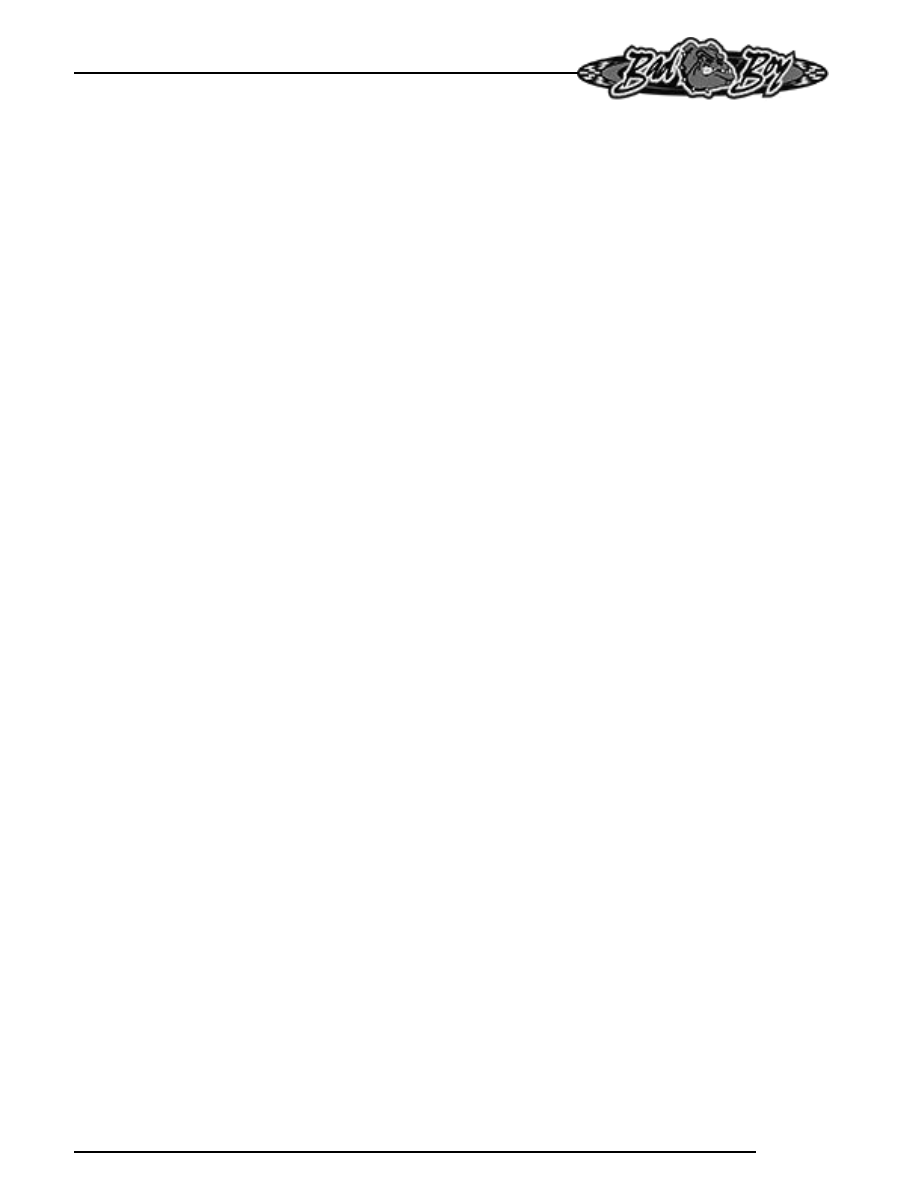BBM OUTLAW & OUTLAW EXTREME MODELS ZERO-TURN MOWER. Manual - part 5

PAGE
17
HOW TO CHOOSE THE RIGHT BLADE
Essentially there are only TWO basic styles of mowing blades used or approved for use on our current
products:
1) The standard style of mowing blade is essentially designed for cutting grass and effectively discharging
the clippings out from the deck to fall onto the lawn or to be captured in a grass collection system.
Standard blades are also referred to as “2-in-1” (discharging & bagging ) or “high-lift” blades (because
they are designed to create a higher-lifting airflow).
2) Mulching blades generally have a more curved style surface and frequently include extra cutting
surfaces along the blade edges. These blades may also come in a “+” design (which is actually two
individual blades arranged in a perpendicular fashion to enhance mulching). The “+” blades are usually
found on older style mowers; newer ones utilize blades with more advanced mulching technology.
Mulching blades may also be referred to as “3-in-1” (mulching, discharging & bagging) or “all-purpose”
blades.
Bear in mind that the re-circulating airflow design of 3/1 blades makes them less efficient at discharging
grass clippings than a standard 2/1 blade. As with most all-purpose tools, there is some give and take as
opposed to using a tool designed for a more specific purpose.
If you’re experiencing less-than-desired cutting or discharging performance with a 3/1 blade, you may want
to check into using a 2/1 blade. Conversely, if you’re using a 2/1 blade and want to mulch clippings, you
should see about the availability of mulching blades or a mulching kit.*
The type of blade installed on a new mower is a decision the retailer makes for each model of mower, based
on the expected needs of most customers. If you’re unsure of which blade is on a particular model, inspect
the blade. Blades have part numbers stamped into them. Then compare these part numbers with the unit’s
Operator’s Manual or Parts List.
It is true there are many other styles of blades available. But since we don’t manufacture or recommend
using these other aftermarket styles, we will leave them out of this discussion. Should you want more
information on special application or aftermarket blades, you should contact the companies that make these
products. NOTE: Customers using non-OEM blades do so at their own risk. The use of unapproved (non-
OEM) blades may void any or all of the mower and engine factory warranties.
* MULCHING KITS – These generally consist of mulching blades and a mulching plug (which closes off
the discharge opening to keep the clippings contained under the deck for re-cutting) plus any necessary
hardware for installation. Please check with your parts distributor regarding the contents of a particular
mulching kit.